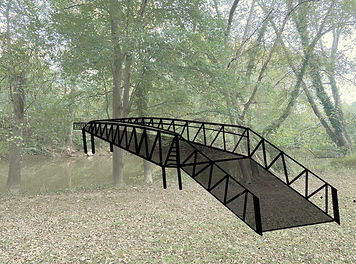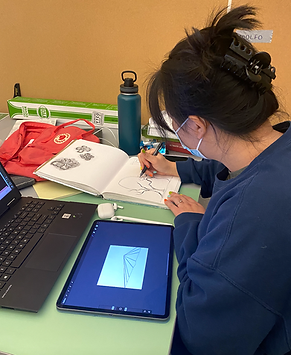
course reflections
Below you will find my reflections on the ecological, economic, social sphere courses.
Ecological Sphere
Course: Land 1500: Design and the Environment
While Land 1500: Design and the Environment the forefront landscape architecture course, often attracting freshman to join the college of environment and design. I took this course as a sophomore, meaning I had already been exposed to many topics covered in this class. While this may lead you to believe that this course was quite redundant (and on a textbook level it may have been), but what changed the outcome of my education was the professor, David Spooner.
Professor Spooner used this class to explain the basic concepts and components of landscape architecture, yet he explained it with such passion that it inspired my own further interest in the profession. He connected the dots between viable ecosystems and human experience, which allowed me to see the crucial design decisions that lead to healthy built environments. He gave many examples of creative and innovative solutions in our communities that help facilitate these design and foster positive expression.

An exercise I did while in his class was drawing my own map (without looking at a real map) to figure out my understanding of the important places around me. With this I was able to get a better sense of what “landmarks” I truly were spatially aware. This gave me a better grasp of how I currently understand my routes and local experience. By comparing my map with my classmates maps I was able to see which spaces people gravitate to and how that correlates to public designed places. With this information, I started to understand how design can effect user experience and make they enjoy/appreciate a space.
Placemaking exercise in which we had to see what landmarks we could remember, showing us how we orientate ourselves in our hometown.
Economic Sphere
Course: Land 2310: Applied Landscape Ecology
(approved substitute)
In this course we specifically worked on the ecological viability and social welfare around the Athens Greenway targeted toward created a long-term plan for development. We evaluated economic possibilities by improving the greenway which could help increase the community engagement and business surrounding the greenway. This would be done in a various of ways such as improving stormwater structures, design additions (hardscape and soft scape), increasing connectivity, and placing specific needs close to residential or commercial areas. My groups section of the greenway was between E.Broad St. and North Avenue, which is the section with the largest homeless encampments and closest to downtown.
We evaluated how this improvement of the greenway could help grow the economic prosperity of Athens, often referring to similar design projects such as the Atlanta Belt line and New York’s High line. While we are trying to improve the Athens economy, we also had to evaluate how our deigns project ideas would affect the local Athens homeless population and trying to balance their social welfare and housing opportunities with long term economic growth. Additionally, with these plans in mind we had to account for the current ecological condition of our site and which areas would need to be conserved while which areas could be more developed. At the end of the semester, we presented our long-term plan to county officials in groups of 5 for our section of the greenway

Image shows a bridge intervention in athens Greenway park to give better access to visitors across the Oconee river.

Image shows proposed parking lot to facilitate Athens greenway.
Social Sphere
Course: Geography 1125 : Resources, Society, and the Environment
Having had taken this course over the summer of freshman year, it set the precedence for future sustainability courses, giving me an initial background on how humans affect the environment. At this point in my university education I had taught to look at things at a smaller scale, for example how specific plants may play in local ecology or site specific design attributes. This course showed me how all of these smaller actions or behaviors can lead to large scale and long term implications.
We took a closer look at biomes and ecoregion, characterizing them on an ecological level, with further analysis on how humans have adapted to these diverse locations and their generational impact. This lead me to see how the interaction between humans and the environments is a diverse and continual process that is constantly in response to one another. Reinforcing the idea that small individual behavior can have long term effects. I found particular interest in looking at population’s growth patterns and how they correlated to current political and climate conditions. In that, how this varies from country to country with different societal behavior norms. Each place had different impacts on their environment, yet all were similar in that harmful actions toward the environment would not be without detriment to local populations. We spoke about the realistic future of the earth and the current rapid destructive human actions. While this seemed very daunting and scary at the time, it taught me the importance of long term sustainable behaviors and how they can truly help the rejuvenation and protection of our environment.
